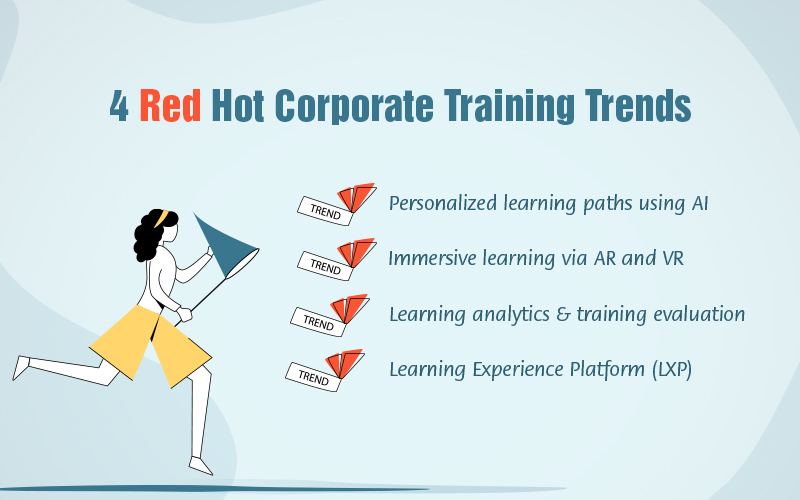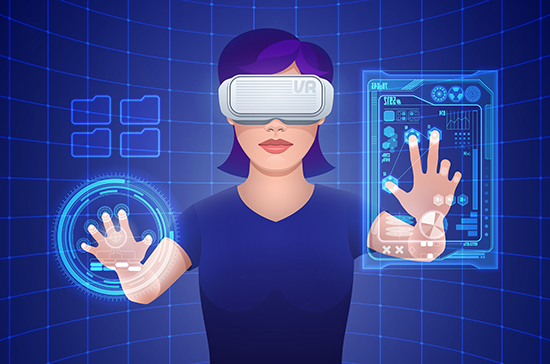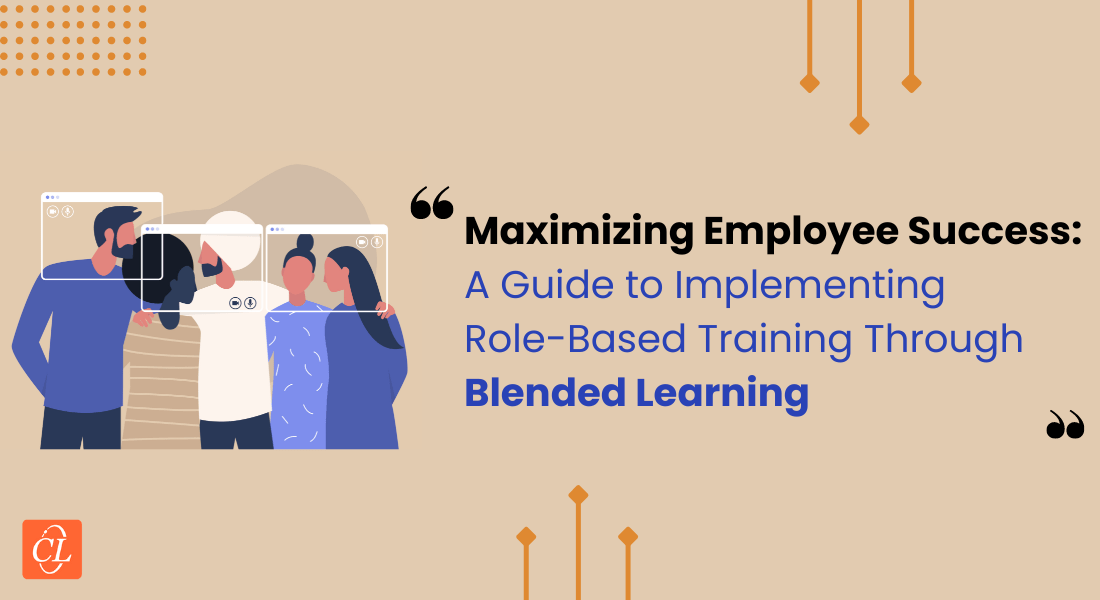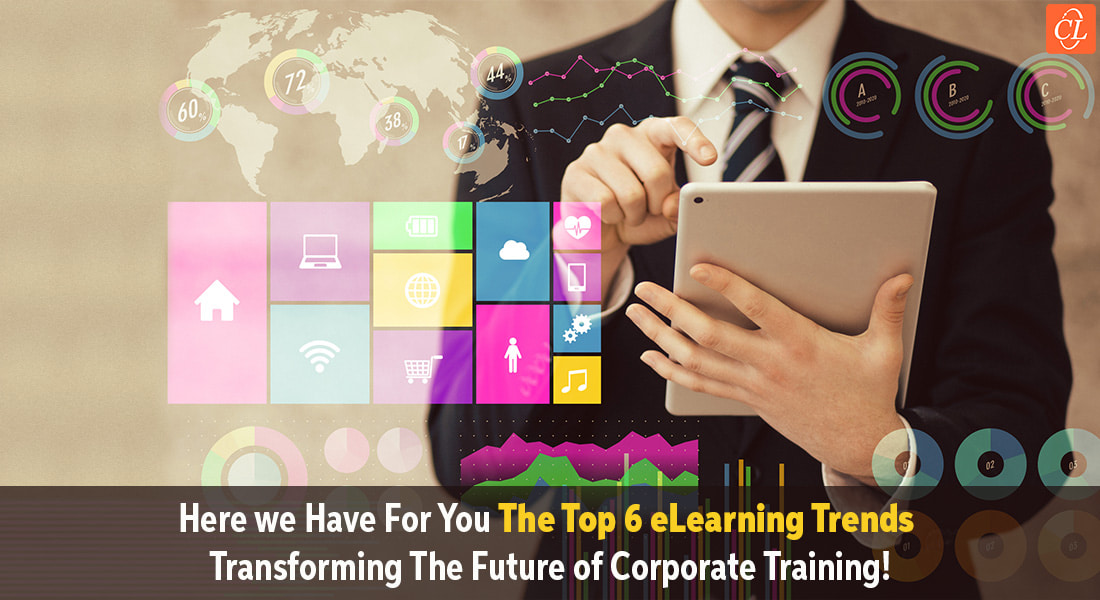Trends in Corporate Training Today: Where Should Organizations Focus?
Here are 4 popular learning trends organizations must focus on for offering their learners a relevant, engaging and effective corporate training experience.

In today’s competitive market, a successful organization is one that embraces change, adapts its business processes, and equips its employees with the required job skills to drive maximum business results. However, the industry is evolving and so are the ways in which corporate training is being offered.
Today’s ever-advancing technologies and learning trends give companies an opportunity to offer training in more innovative ways than ever. Besides, learners do not want to merely learn anymore—they want to experience their learning in a deeply personal way. As a result, traditional methods of training employees are no longer enough.
Top 4 Corporate Training Trends Companies Should Look For!
What are the top trends in corporate training?
- Personalized learning paths using AI and big data
- Immersive learning via augmented reality & virtual reality
- Learning analytics & training evaluation
- Rise of the Learning Experience Platform (LXP)
In this blog, we will look at four popular learning technologies and trends that companies today are embracing to offer their learners a relevant, engaging and effective learning experience.
Corporate Training Trends Organizations Should Look For
1. Personalized Learning Paths Using AI and Big Data
It was not so long ago that AI (artificial intelligence) was restricted to the realm of science fiction. Though the term AI may conjure up vivid images of robots and chat assistants, AI is poised to make a big splash in the corporate training world, and a future with AI assisted learning is not far away.

According to a study by Oracle, over 27% of “HR leaders believe that AI in corporate training will positively impact learning and development” in the coming years.”
Artificial intelligence will provide valuable insights from the enormous amounts of data it will collect and analyze, which in turn helps craft customized corporate training programs faster than ever before. Access to these insights and information will allow companies to understand learner behavior better and to predict their learning requirements by recommending and positioning content based on their past behavior.
AI will take adaptation further by not only identifying what a learner needs to learn next but also the best way for them to learn.
2. Immersive Learning via Augmented & Virtual Reality
No learner will be interested in learning something that does not help them in the performance of their job tasks. The training needs to be more than just information on a paper or a slide. This is where the learning trend of immersive technology fits.
Immersive technologies such as Augmented Reality (AR) and Virtual Reality (VR) follow the principles of experiential learning, which has long been established as the most efficient way of learning.

These technologies are ideal for training workers who perform risky jobs such as firefighters, gas engineers, operators of heavy machinery, among others.
Here are a few examples of immersive technologies that have the potential to make a huge impact in corporate training:
New sales representatives can be immersed in a virtual world where they can learn and develop their sales skills. Virtual sales training environments help sales reps connect with virtual customers that seem, well, real. The virtual sales process can be slowed down or broken down—each step in the process individually examined and appropriate feedback given.
In terms of augmented reality, the HoloLens by Microsoft is being used by multinational corporations to provide real-time on-the-job, performance support to their employees with digital overlays instructing and guiding them through tasks.
→ Download our eBook on how to enhance learner performance using mobile learning.
As far as Virtual Reality (VR) is concerned, the Virtual Engineering Centre—an initiative by the University of Liverpool School of Engineering—has come up with advanced modelling, simulation, and 3D immersive visualization for product design and manufacturing innovation.
Retail stores are also beginning to use VR in corporate training to help their customer care executives offer a great customer service experience.
3. Learning Analytics & Training Evaluation
Evaluating a corporate training program is not just about whether training objectives were met, or if the participants had an engaging learning experience. The ultimate objective of evaluation is to see how effectively learners are able to apply the newly gained knowledge to their job. But equally important is evaluating the training program with regard to time, budget, and resources.
One of the most efficient ways to do this is by leveraging learning analytics. In a nutshell, learning analytics is the measurement, collection, analysis, and reporting of data about learners and their contexts, for purposes of understanding and optimizing learning and the environments in which it occurs.

Most organizations collect this data through their LMS, which provides records of learner activity as well as their performance. However, this collected data on its own will not provide insights to evaluate or improve the training, unless data analysis is done. Data analysis is the process of obtaining actionable insights from the collected data, and is used to take informed decisions.
Continuing advancements in the field of machine learning and AI are only going to help companies significantly increase the value of learning analytics. As Libby Webb in an article for Training Journal reports, improvements in AI “will eventually remove the need for individuals in the L&D space to have experience from an analytical background, making the task of understanding and using data to drive decisions more accessible.”
4. Rise of the Learning Experience Platform (LXP)
Both the LMS (Learning Management System) and LXP are used to disseminate corporate training programs and provide options to track learner activity and generate reports—but the similarities end here.
In contrast to the traditional LMS, an LXP curates and aggregates content that’s available on the Internet, in addition to an organization’s internal online training assets, and user-generated content (UGC).
An LXP delivers targeted content, offers social media support and makes intelligent recommendations, providing learners with a ‘Netflix-like’ environment. Just like how Netflix changed how we consume multimedia content (by creating a mass portal for on-demand media content, driven by AI-led recommendations), an LXP attempts to recreate similar levels of engagement and interactivity when it comes to dissemination of training.
As Josh Bersin, who first popularized the LXP, notes in his blog:
“LMS systems were never designed to be employee-centric. They were developed as ‘Management’ systems for learning, focused on business rules, compliance, and catalog management for courses… The LXP, which looks more like YouTube or Netflix, is a true content delivery system, which makes modern content easy to find and consume.”
Concluding Remarks
Here’s some food for thought: sooner or later, older methods of corporate training will inevitably be replaced by newer, better technologies. Many rolled their eyes at the prospect of online learning ever being delivered via mobiles. But look at what eLearning has done to corporate learning—it has redefined training delivery in every sense of the word.
Bucking new learning trends will prove costly for an organization. So, embrace the trends to offer training that is up to date, with the latest technology standards.





